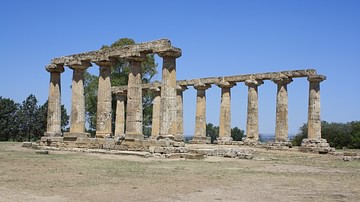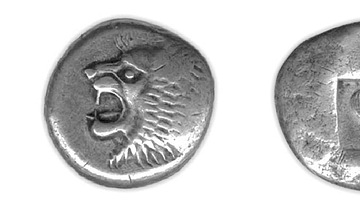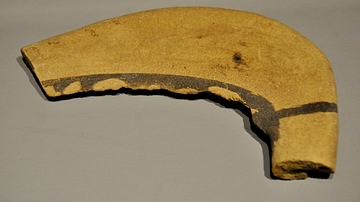Search
Search Results

Definition
Metapontum
Metapontum, located on the southern coast of Basilicata, Italy, was an Achaean colony founded in the late 8th century BCE. Thriving on agriculture and trade, the city became one of the most prosperous colonies in Magna Graecia. Today, the...

Book Review
Dark Emu: Aboriginal Australia and the Birth of Agriculture
Dark Emu: Aboriginal Australia and the Birth of Agriculture by Bruce Pascoe is a fascinating contribution to the evolving discovery of the lost histories of Indigenous and Torres Strait Islander peoples in Australia, opening up new pathways...

Image
Possible Agricultural Centers in Prehistoric China
Map showing the spatial distribution of rice, millet, and mixed farming sites with a boundary of rice and millet and possible centers of agriculture in China, published in "Prehistoric evolution of the dualistic structure mixed rice and millet...

Article
Stone Age Tools
As the Stone Age covers around 99% of our human technological history, it would seem there is a lot to talk about when looking at the development of tools in this period. Despite our reliance on the sometimes scarce archaeological record...

Article
Gobekli Tepe - the World's First Temple?
Located in modern Turkey, Göbekli Tepe is one of the most important archaeological sites in the world. The discovery of this stunning 10,000 year old site in the 1990s CE sent shock waves through the archaeological world and beyond, with...

Article
Colchis & Iberia in Antiquity
Colchis (western Georgia) and Kartli/Iberia (eastern and southern Georgia) were important regions in the Caucasus area of Eurasia from the Bronze Age of the 15th century BCE. Prospering through agriculture and trade, the region attracted...

Definition
Mesopotamia
Mesopotamia (from the Greek, meaning 'between two rivers') was an ancient region located in the eastern Mediterranean bounded in the northeast by the Zagros Mountains and in the southeast by the Arabian Plateau, corresponding to modern-day...

Definition
Aztec Civilization
The Aztec Empire (c. 1345-1521) covered at its greatest extent most of northern Mesoamerica. Aztec warriors were able to dominate their neighbouring states and permit rulers such as Montezuma to impose Aztec ideals and religion across Mexico...

Definition
Ancient Japan
Ancient Japan has made unique contributions to world culture which include the Shinto religion and its architecture, distinctive art objects such as haniwa figurines, the oldest pottery vessels in the world, the largest wooden buildings anywhere...

Image
Clay Sickle
This cutting tool witnessed the beginning of agriculture. Ubaid period, 5th millennium BCE, Mesopotamia, Iraq. (The Sulaimaniya Museum, Iraq).